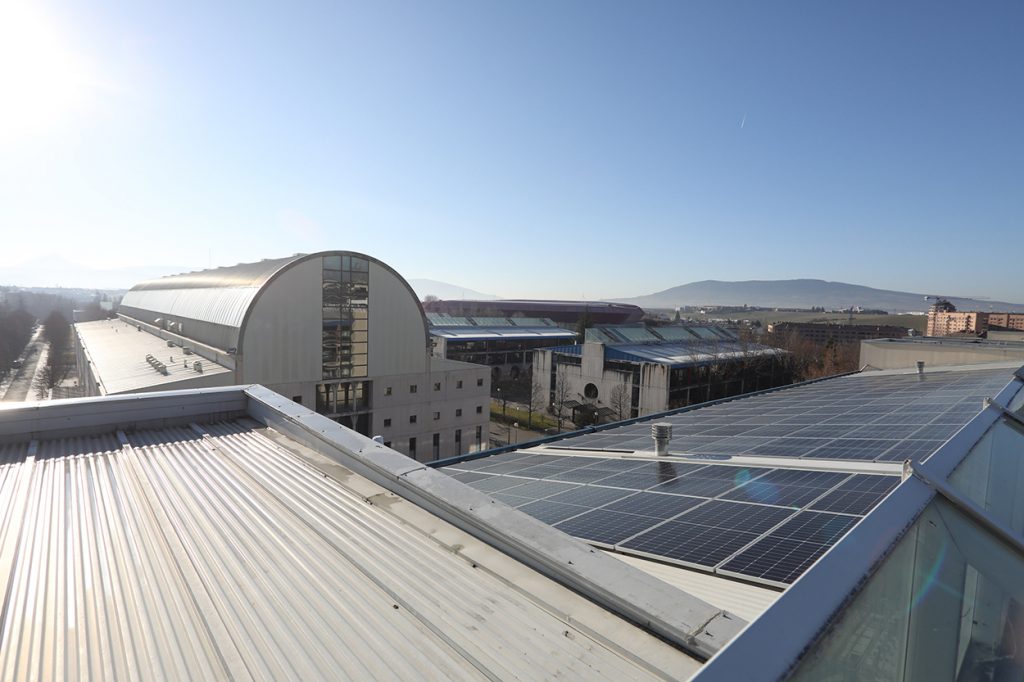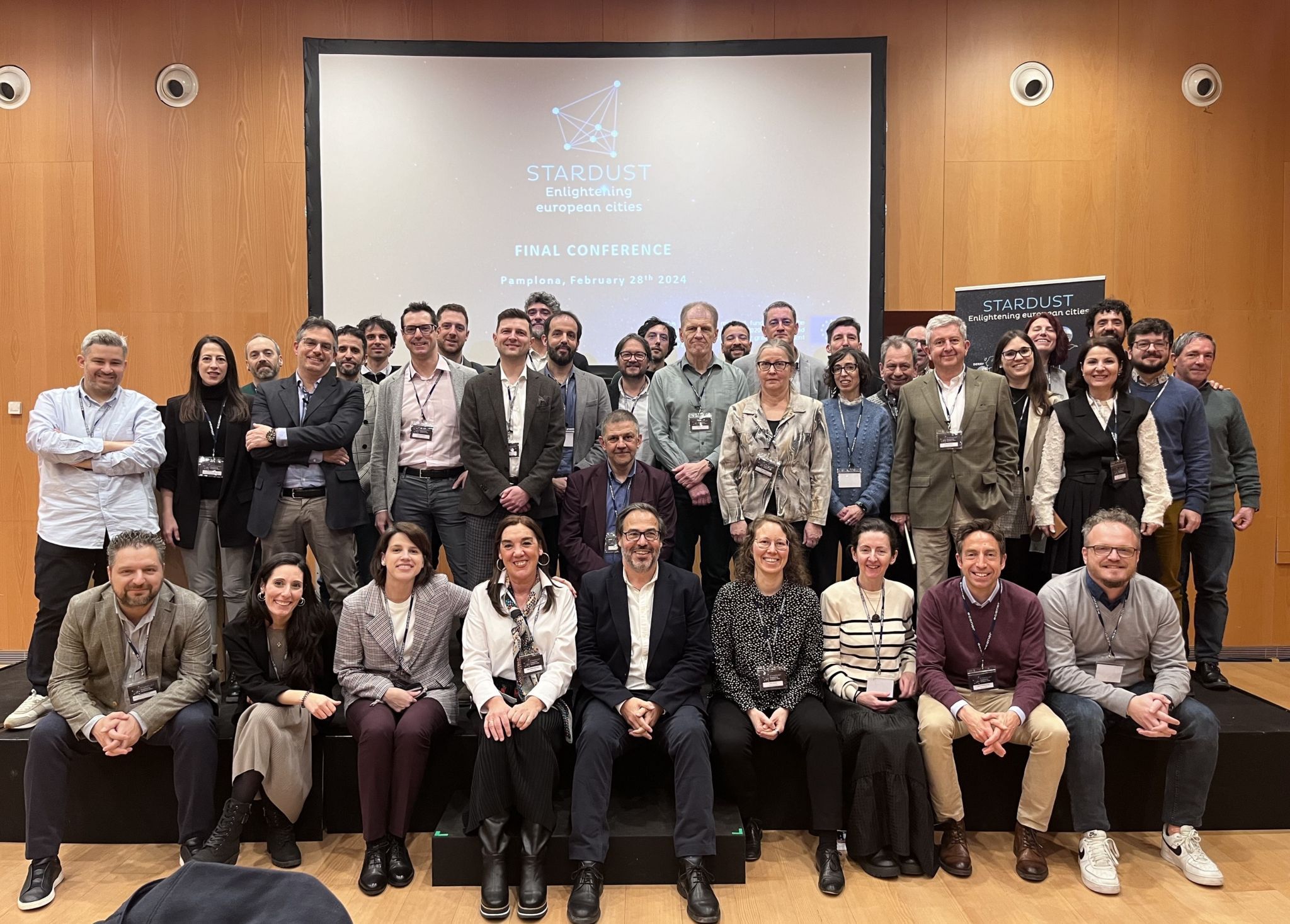The initiative is part of the demonstration pilots being implemented in Pamplona under the umbrella of the STARDUST project aimed at achieving a low carbon and smarter city.
Powered by a solar photovoltaic source, the smart microgrid uses second-hand stationary batteries that were once used in electric vehicles. These batteries are a key component as they enable peak power supply.
The technology is located on the campus of the Public University of Navarre (UPNA). It was developed by researchers from the university’s Institute of Smart Cities (ISC). Apart from UPNA, other STARDUST partners involved are the Government of Navarra; the National Centre for Renewable Energy (CENER); BeePlanet, which provides the batteries; and the local authority Mancomunidad de la Comarca de Pamplona which runs the electric bus network.
Electric transport services in towns and cities present several challenges. “Firstly, the charging of buses has to match the timetables on each route,” explains Pablo Sanchis, coordinator of the initiative. Therefore, the time that the bus remains stationary at the terminus station is key to ensure sufficient charging of the bus’s electric storage system. Secondly, the limited charging time implies a very high demand for electrical power”.
Supplying this peak power isn’t always easy: “The easiest access to these grids does not necessarily coincide with the location of bus line terminus stations. This may hamper the roll-out of electric bus fleets. However, the expected increase in electricity consumption may provide an additional incentive to install photovoltaic generation units to try to balance supply and demand in a city like Pamplona,” says Pablo Sanchis.
In this context, “the design of advanced charging stations that incorporate not only the electronics needed to connect the bus to the distribution network, but also a stationary back-up electrical storage system and a renewable electricity generation system can overcome the aforementioned drawbacks and facilitate the transition to an electric urban transport system”, says Alfredo Ursúa, who is also a researcher on the team.
The installation consists of several elements: “the back-up storage system, which consists of second-life lithium-ion batteries, and roof-mounted photovoltaic panels,” describes Alfredo Ursúa. “Both form a microgrid designed to be connected either to the internal network for experimental validation tests or, in the future, to the entrance of the nearby pantograph post of line 9 of the Regional Urban Transport that is already electrified. The microgrid is managed and controlled in a coordinated manner from a control unit, with the possibility of remote access”.
In addition, a monitoring station is to be installed in the University’s lecture theatre. “This monitor will show real-time information on the main energy flows – photovoltaic generation, the consumption of the station and battery status. It will also allow more detailed information to be consulted by means of graphs or energy tables. This monitoring system will also be available remotely through a specific website,” says Alberto Berrueta.
Thus, the researchers hope that both the university community and society “will perceive the effort that the institutions are making in favour of renewable energies, electric storage and mobility, at a time when Navarra could be one of the pioneers in the electrification of urban transport in its capital, after the region became a world leader and a benchmark in the development of wind energy”.


